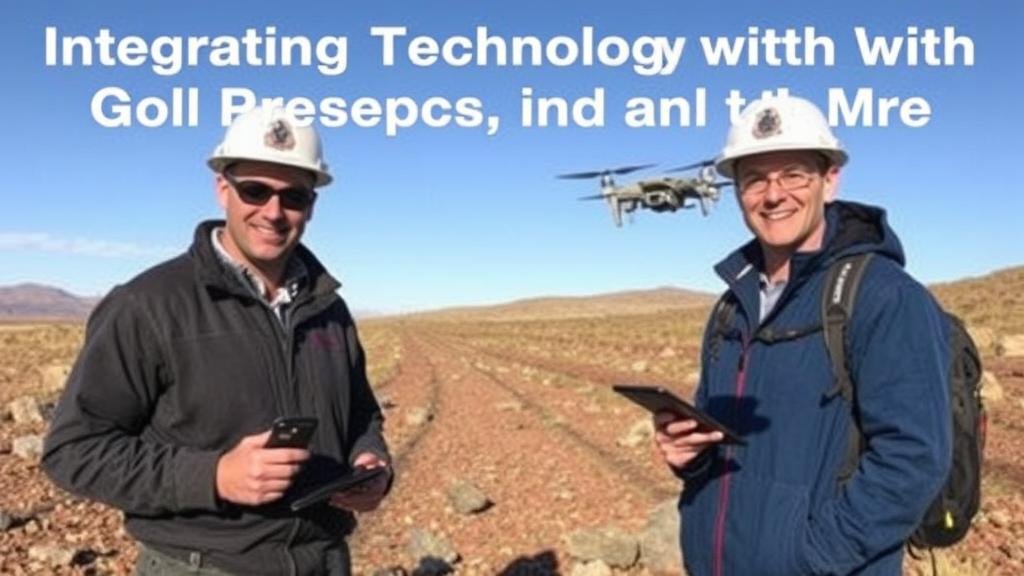Integrating Technology with Gold Prospecting: Drones, Apps, and More
Integrating Technology with Gold Prospecting: Drones, Apps, and More
As the gold prospecting industry evolves, the integration of technology has revolutionized traditional methods, enabling prospectors to enhance their efficiency and improve their chances of finding valuable resources. The incorporation of modern tools such as drones and specialized applications has transformed the way gold prospectors operate, providing them with advanced data collection and analysis techniques. This article explores these innovative technologies and their implications for gold prospecting.
The Role of Drones in Gold Prospecting
Drones, or unmanned aerial vehicles (UAVs), have emerged as invaluable tools for gold prospecting. facilitate the survey of large areas quickly and efficiently, often in places that are difficult to access by foot.
For example, a study conducted by the University of Southern California highlighted the use of drones equipped with multispectral cameras to identify mineral deposits in remote regions. These cameras capture images in different wavelengths, allowing prospectors to detect variations in vegetation and soil that may indicate the presence of gold or other minerals.
Also, drones can aid in creating detailed topographic maps of prospecting areas. Using software that processes the images collected, drones can generate three-dimensional models of the terrain, thus enabling prospectors to locate potential sites more effectively.
Mobile Applications for Prospecting
The proliferation of mobile applications tailored for prospecting has provided miners with tools that enhance both fieldwork and data management. e apps assist in various tasks, including terrain analysis, record-keeping, and social networking among prospectors.
- Field Production Tracking: Various apps, such as Gold Rush: The Game and Prospectors, allow users to log their finds and track production metrics over time. These applications analyze trends that can be invaluable for decision-making.
- Geo-mapping Tools: Applications like Google Earth and ArcGIS enable prospectors to access geographic data, overlay mineral maps, and analyze site conditions before embarking on fieldwork.
According to the American Mining Association, over 60% of prospectors report using digital tools for planning and field activities, highlighting the trend towards reliance on technology for informed decision-making.
Geological Software and Data Analysis
Geological software programs have become standard in the prospecting industry, offering advanced analytics for mineral exploration. These tools utilize large datasets to model and predict mineral deposits locations using statistical and geospatial analysis.
For example, software like Leapfrog and Geovia Surpac assists geologists in visualizing subsurface conditions to identify potential gold seams. Utilizing simulation and modeling techniques, these tools can significantly reduce the time and cost associated with exploration.
Future Trends: AI and Machine Learning
The future of gold prospecting technology is poised to be shaped by artificial intelligence (AI) and machine learning capabilities. These technologies offer the potential to analyze vast quantities of geological data and predict where gold deposits might be located with remarkable accuracy.
Several companies are developing AI-powered systems that analyze historical data, satellite imagery, and geological surveys to generate predictive models. For example, a recent pilot project by Planet Labs demonstrated how machine learning algorithms could identify areas of high mineral potential based on previous findings and environmental data.
Real-World Applications and Case Studies
The application of these technologies is not just theoretical; numerous successful case studies illustrate their practical impact. For example:
- A Canadian prospecting company utilized drone surveys to re-evaluate a long-neglected mining site, leading to the discovery of a previously overlooked gold vein, resulting in a significant financial return.
- In Australia, a group of prospectors used mobile applications integrated with existing geological data to guide their exploration efforts, successfully tripling their haul compared to traditional prospecting methods.
Challenges and Considerations
Despite the advantages, integrating technology into gold prospecting is not without challenges. Issues such as technological adaptability, regulatory constraints, and the need for reliable data can hinder full adoption.
Prospectors must also be aware of the costs associated with advanced technology and prioritize their investments based on potential returns. Choosing the right tools that fit their specific needs and budgets is critical for maximizing the benefits.
Conclusion: Embracing the Future of Gold Prospecting
Integrating technology into gold prospecting has transformed the landscape of the industry, making it more efficient and data-driven. As tools such as drones, mobile applications, and advanced geological software continue to develop, prospectors who embrace these technologies will likely improve their success rate and stay competitive in an evolving market.
For those looking to enhance their prospecting endeavors, investing in these technologies is not only a step toward modernization but a crucial strategy for navigating the complexities of mineral exploration in the 21st century.



